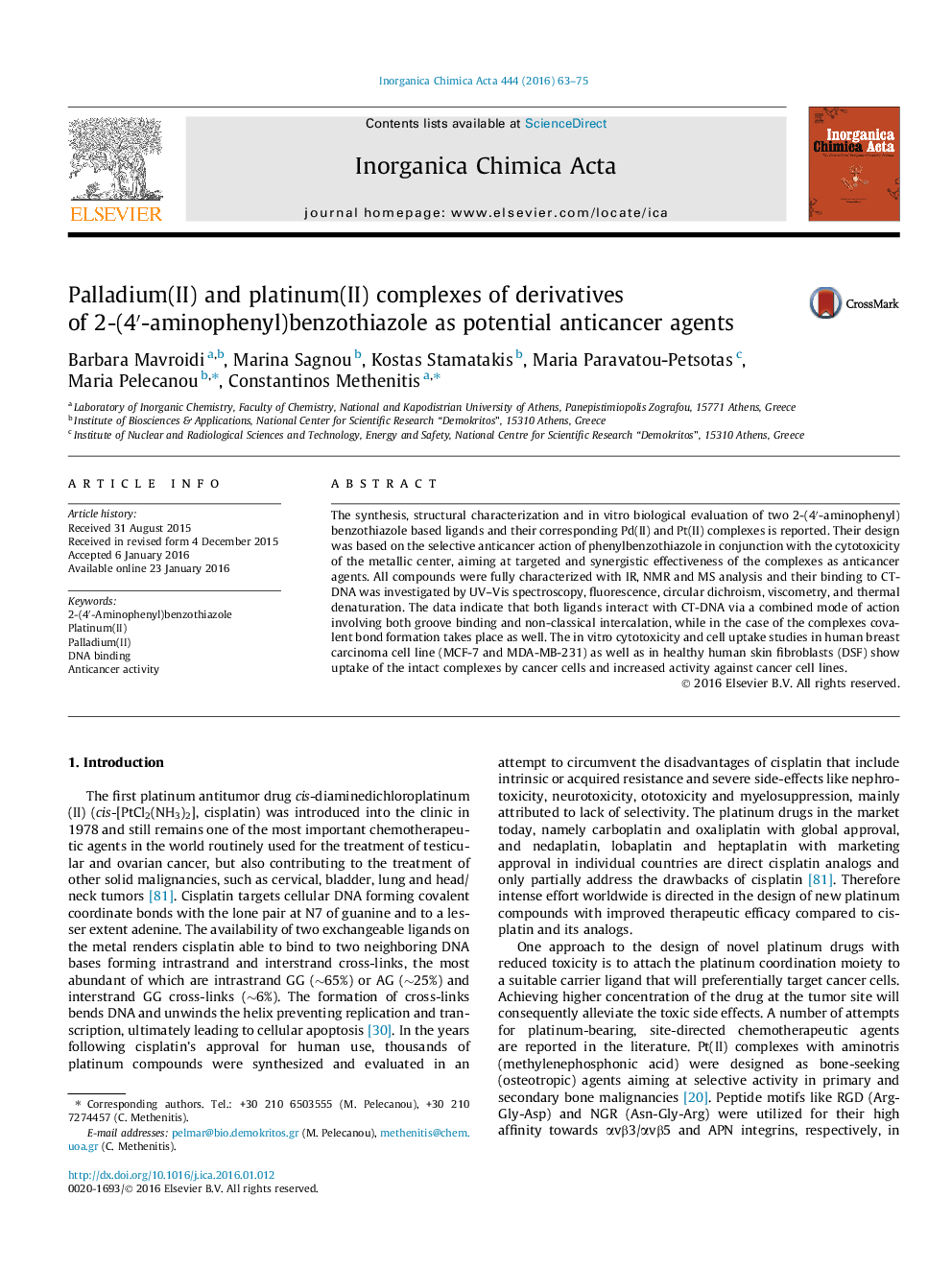| Article ID | Journal | Published Year | Pages | File Type |
|---|---|---|---|---|
| 1312005 | Inorganica Chimica Acta | 2016 | 13 Pages |
•Pd(II) and Pt(II) complexes of 2-(4′-aminophenyl)benzothiazole derivatives were synthesized.•DNA binding studies reveal strong interaction of ligands and complexes with DNA.•Our evidence suggests the presence of ligands and complexes in the minor groove.•The complexes show increased cytotoxic activity against cancer cells lines.
The synthesis, structural characterization and in vitro biological evaluation of two 2-(4′-aminophenyl)benzothiazole based ligands and their corresponding Pd(II) and Pt(II) complexes is reported. Their design was based on the selective anticancer action of phenylbenzothiazole in conjunction with the cytotoxicity of the metallic center, aiming at targeted and synergistic effectiveness of the complexes as anticancer agents. All compounds were fully characterized with IR, NMR and MS analysis and their binding to CT-DNA was investigated by UV–Vis spectroscopy, fluorescence, circular dichroism, viscometry, and thermal denaturation. The data indicate that both ligands interact with CT-DNA via a combined mode of action involving both groove binding and non-classical intercalation, while in the case of the complexes covalent bond formation takes place as well. The in vitro cytotoxicity and cell uptake studies in human breast carcinoma cell line (MCF-7 and MDA-MB-231) as well as in healthy human skin fibroblasts (DSF) show uptake of the intact complexes by cancer cells and increased activity against cancer cell lines.
Graphical abstract2-(4′-Aminophenyl)benzothiazole based ligands and their Pd(II) and Pt(II) complexes strongly interact with CT-DNA.Figure optionsDownload full-size imageDownload as PowerPoint slide
